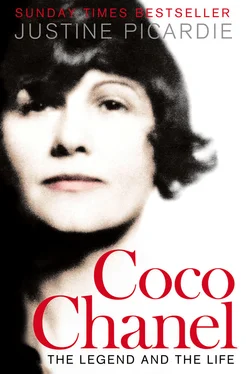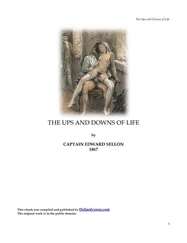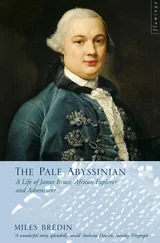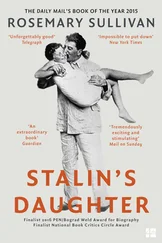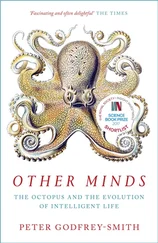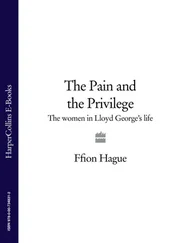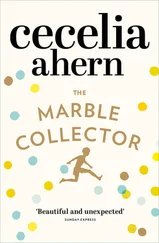Chanel rarely talked about the circumstances of her birth, but she did occasionally mention a train journey that her mother had undertaken just beforehand, in search of the elusive Albert. ‘What with the clothes of that time,’ she remarked to Haedrich with her customary, circuitous vagueness, ‘I suppose no one could see that she was about to have a baby. Some people helped her – they were very kind: they took her into their home and sent for a doctor. My mother didn’t want to stay there.
‘“You can get another train tomorrow,” the people said, to soothe her. “You’ll find your husband tomorrow.” But the doctor realised that my mother wasn’t ill at all. “She’s about to have a baby,” he said. At that point the people who had been so nice to her were furious. They wanted to throw her out. The doctor insisted that they take care of her. They took her to a hospital, where I was born. One of the hospital nuns was my godmother.’
The name of this nun was Gabrielle Bonheur, according to Chanel, ‘so I was baptised Gabrielle Bonheur Chanel. I knew nothing of this for a long time. There was never any occasion to check my baptismal certificate. During the war I sent for all my documents because one was always afraid of the worst …’ In fact, the name Bonheur does not appear on her baptismal certificate, but perhaps Gabrielle felt the right to make it her own in later life; to lay claim to its meaning, which is happiness.
In yet another version of her birth, told to a different friend, André-Louis Dubois, Gabrielle mentioned a train again, suggesting that her mother went into labour while travelling on the railway. ‘She talked constantly about trains, sometimes even claiming to have been born on a train,’ said Dubois, remembering Chanel to a French journalist soon after her death. ‘Why this obsession with trains?’ One possible answer is that she had an uncle who was a railway employee, but even so, trains seemed to have a deeper significance for Chanel than that; as if they were a connection to a past that was always on the move, yet ran along fixed lines, to a destination of her own choosing.
Whatever her association with train travel, she was also a child of the poorhouse, plain Gabrielle Chasnel. And Gabrielle she stayed throughout her childhood – Coco was a creation that came later – although she invented a story that is revealing in its untruths: ‘My father used to call me “Little Coco” until something better should come along,’ she told Haedrich. ‘He didn’t like [the name] “Gabrielle” at all; it hadn’t been his choice. And he was right. Soon the “Little” drifted away and I was simply Coco.’ Or might it be that her father was complaining that he didn’t like Gabrielle herself; that he had not chosen to have children; for soon he left them, discontented with marriage and fatherhood, always on the lookout for something better.
At times, Gabrielle declared Coco to be an ‘awful’ name; and yet she was proud of its recognition throughout the world, evidence of her indisputable presence, despite the lack of acknowledgement or recognition by her father. But still it was a cipher, a name that her father had never known, even though she declared otherwise. ‘If anyone had told me before the war that I’d be Coco Chanel to the whole world, I’d have laughed,’ she said to Haedrich. ‘Mademoiselle Chanel had four thousand employees and the richest man in England loved her. And now I’m Coco Chanel! Nevertheless, it isn’t my name … People stop me in the street: “Are you really Coco Chanel?” When I give autographs, I write “Coco Chanel”. On a train to Lausanne a couple of weeks ago, the whole carriage paraded past me. In my own premises I’m called “Mademoiselle”; that goes without saying. I certainly don’t want to be called Coco in the House of Chanel.’ (These seemingly disconnected sentences are as Haedrich transcribed them; the fleeting references to her name and the train exactly as he recorded them.)
In truth, no one knew for certain what name Gabrielle answered to in childhood, nor where exactly Coco came from. In old age, Chanel told Claude Delay that her father spoke English – ‘that was considered something diabolical in the provinces’ – which seems highly unlikely, but it is possible that the story formed a link in her mind with the English-speaking men that she loved in adulthood (Boy Capel and the Duke of Westminster, both of whom were to prove unfaithful to her). She also told Delay that her father gave her a present when he returned from one of his numerous trips away: a penholder made of a knucklebone, with Notre-Dame depicted on one side, and the Eiffel Tower on the other; and that she had dug a hole for this decorated bone in a cemetery, and buried the gift, as an offering to the dead.
If Chanel’s own account is to be believed, by the age of six she was spending as much time as possible in a graveyard. ‘Every child has a special place, where he or she likes to hide, play and dream,’ she said to Paul Morand (who set down her memories in his evocative book, L’Allure de Chanel ). ‘Mine was an Auvergne cemetery. I knew no one there, not even the dead.’ And yet the dead seemed to become alive for her there, although they remained as silent as their graves. ‘I was the queen of this secret garden. I loved its subterranean dwellers. “The dead are not dead as long as we think of them,” I would tell myself.’
She became attached to two unnamed tombstones, decorating them with wildflowers – poppies and daisies and cornflowers – bringing her rag dolls to the cemetery; her favourite dolls, because she had made them for herself. ‘I wanted to be sure that I was loved,’ she told Morand, ‘but I lived with people who showed no pity. I like talking to myself and I don’t listen to what I’m told: this is probably due to the fact that the first people to whom I opened my heart were the dead.’
Her mother figures only as a shadowy invalid in Gabrielle’s memories; though there are a few splashes of crimson that stain the blank pages within Chanel’s shifting narratives – her stories of the blood that a sick woman coughed onto white handkerchiefs, and an interior which bears some resemblance to the sinister red room where Jane Eyre was incarcerated as a child. Chanel, in later life, was a fan of the Brontës, returning repeatedly to Jane Eyre and Wuthering Heights (stories of near incestuous passion, of locked doors and unhinged minds). But her description of the red room is also reminiscent of another nineteenth-century novel, The Yellow Wallpaper by Charlotte Perkins Gilman, in which a woman goes mad after the birth of her child, and peels the paper from the walls of the room that imprisons her. In Chanel’s story (as told to Paul Morand), the wallpaper was red. She was five, and her mother already very ill, when she was taken with her two sisters to stay at the home of an elderly uncle. ‘We were shut away in a room covered in red wallpaper. To begin with, we were very well-behaved; then we noticed that the red wallpaper was very damp and could be peeled off from the walls.’ The girls started by peeling small pieces, then climbed onto chairs, and stripped the entire room down to its bare pink plaster: ‘the pleasure was sublime!’ When their mother came into the room, she was silent, saying nothing to her daughters, simply contemplating the disaster, and weeping without making any sound.
Chanel was to claim that her mother died of tuberculosis, which was not necessarily an accurate diagnosis of what killed Jeanne; poverty, pregnancy and pneumonia were as likely to blame. In her account to Delay (subsequently published in Chanel solitaire ), the family lived in a large enough house for the children to be kept in isolation from their sick mother. In fact, they were crowded with her into one room in the market town of Brive-la-Gaillarde, while their father abandoned them for his road trips. But the story Chanel told Delay had her father present, kissing her sister Julia and her on the head as they were eating lunch (no mention was made of the other siblings). ‘He hated the smell of hair and always asked how long it was since we’d had ours washed.’ Who knows how often the Chanel children were able to wash their hair, while their mother lay sick in bed, and their father was gone; but in Chanel’s memory, she would answer to her father that her hair was clean, washed ‘three days ago, with yellow soap’.
Читать дальше
